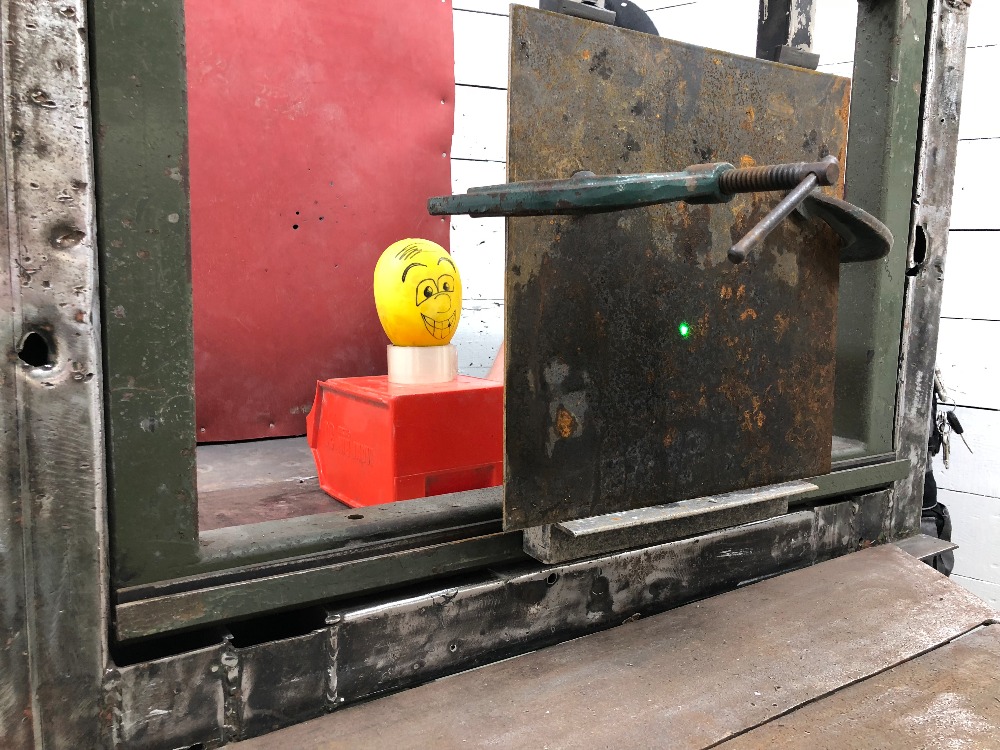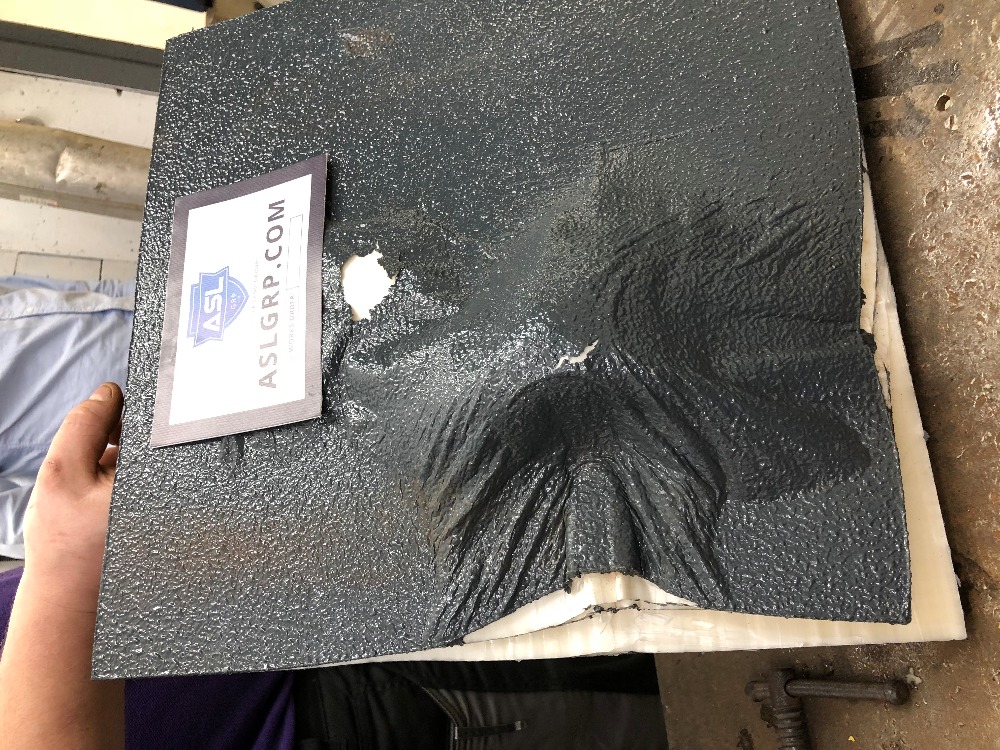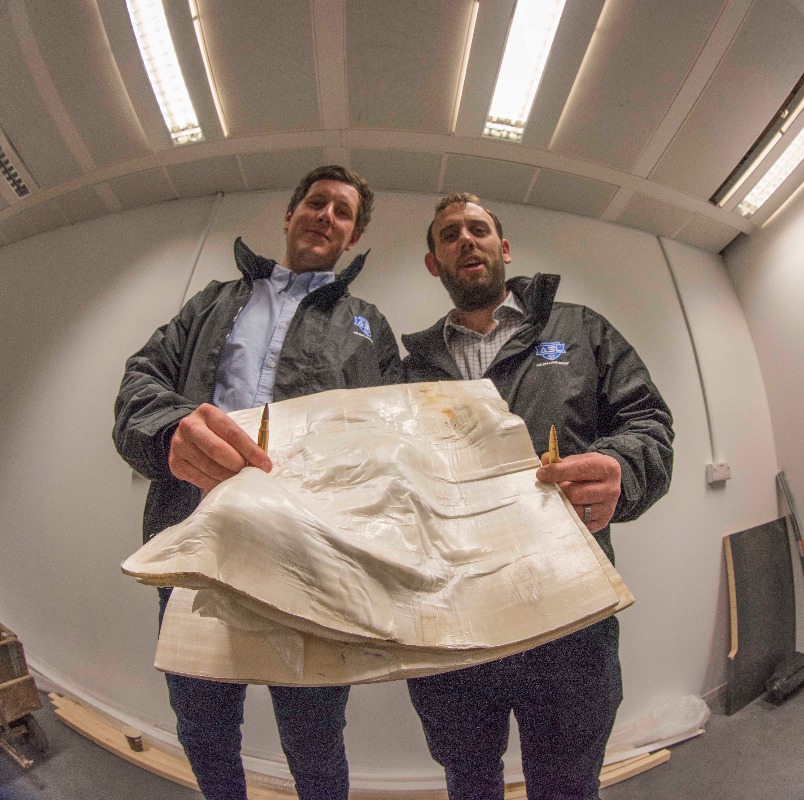TSDF 2018: The art of ballistic protection
At The Superyacht Design Forum 2018, ASL's Jonathan Diffey will discuss how to armour superyachts…
Spending a day at Wiltshire Ballistic Services with Jonathan Diffey and Jack Sandiford-Haigh is something of an eye-opening experience. We meet at the entrance to the old railway tunnel, which has been converted into one of the worlds leading test centres for ballistic materials, and head into the depths. Air Sea Land Group (ASL) specialises in developing custom armour solutions, and they want to clear up a misconception – that the superstructure metal of a superyacht is sufficient to protect you from a speeding bullet. The test: place a fresh melon behind a 7mm-thick mild steel plate, fire a standard AK47 round at it, and see what happens. The result: the floor and the walls of the test range, and my camera, covered in vaporised melon.
“The test,” says Diffey, ASL’s founder and managing director, “is great to show how the steel puts up no resistance to the bullet at all. There’s a very plain hole straight through, and that bullet would quite happily have passed through all the layers of a yacht structure – the outer skin, aircon ducts, wooden interior finishes – and would have ended up where it shouldn’t.” Diffey is quick to point out that it’s not about scare tactics, but about reality. The fact is that many superyacht owners take the protection and safety of themselves and their families very seriously, but for those who want additional safeguards it is important to realise that what you think is going to protect you probably won’t.
As a specialist armour company with decades of combined experience in ballistic protection, ASL creates bespoke solutions to cater to the vast and varied requirements of their clients. Those clients run the gamut, from the military to police forces worldwide, and from high street banks and office buildings to private residences, vehicles and, increasingly, superyachts. The key to ASL’s success comes in the way they approach the design and manufacture process.
“Historically, the industry has always been about flat-panel armour systems,” Diffey explains. “One of our unique selling points is that we are able to mould the armour systems into shapes.” With a background in composites and pattern making, Diffey has built an expert workforce with a diverse range of similar skills. The result is that rather than just using flat materials or metal sheets to clad what needs to be protected, ASL can mould their protection to virtually any shape and for any space imaginable.
At the centre of their offering is a series of high-tech materials – while ASL do offer standard steel protection, in most cases those solutions are both impractical and far too heavy. “We try to offer two or three different materials to suit anyone’s weight-to-budget requirement and also to suit the specific application,” says Sandiford-Haigh, ASL’s sales director. “As with everything, lighter weight means more expensive, but whereas steel suitable for stopping a AK47 round would be around 48kg per square metre, the equivalent in our Legion Polyethylene – when moulded and pressed according to our inhouse-developed processes – is 18kg per square metre. We specialise in these lightweight composite armours.”
For yacht projects, ASL works in a couple of ways depending on whether the yacht is a new-build or looking to add protection during a refit, or whether it is simply adding a system to an existing space, a process known as up-armouring. “Ultimately, within the superyacht environment our armour is not on display – it’s hidden behind the façade and interior fit-out,” says Diffey. “It’s a very bespoke sale, and in the marine industry we don’t sell anything off-the-shelf. We’re not drawing from a catalogue of standard parts or armour plates, rather we’re selling the capability of what our materials and our technology can do.”
For any owner, peace of mind can be a critical factor, even if the chances of being caught up in an attack are slim. When considered early enough, it is relatively easy to design in some form of protection, even if it is limited to one area – effectively creating a safe haven within the yacht (or even in a limo tender). Of course, it is critical when considering an armour option to bring in the experts such as ASL at the earliest stage of design possible – or, in the case of up-armouring an existing yacht, at the very least consulting with those in the know who can guide you on the best choice of materials and their placement depending on the level of protection required.
It's also why ASL's session at The Superyacht Design Forum 2018 will be so unmissable, as Diffey and Sandiford-Haigh will be on hand to offer some practical guidance – and to highlight the possibilities – of incorporating their custom solutions to your superyacht projects. For more information on TSDF 2018 or to book your delegate ticket, click here.
NEW: Sign up for SuperyachtNewsweek!
Get the latest weekly news, in-depth reports, intelligence, and strategic insights, delivered directly from The Superyacht Group's editors and market analysts.
Stay at the forefront of the superyacht industry with SuperyachtNewsweek
Click here to become part of The Superyacht Group community, and join us in our mission to make this industry accessible to all, and prosperous for the long-term. We are offering access to the superyacht industry’s most comprehensive and longstanding archive of business-critical information, as well as a comprehensive, real-time superyacht fleet database, for just £10 per month, because we are One Industry with One Mission. Sign up here.
NEW: Sign up for
SuperyachtNewsweek!
Get the latest weekly news, in-depth reports, intelligence, and strategic insights, delivered directly from The Superyacht Group's editors and market analysts.
Stay at the forefront of the superyacht industry with SuperyachtNewsweek






